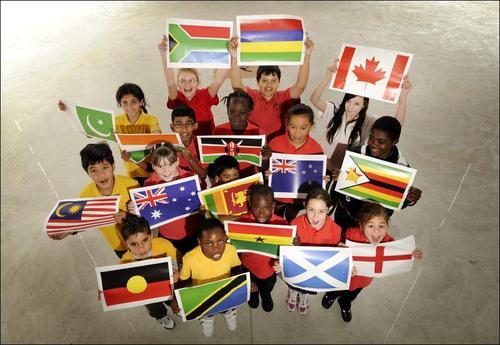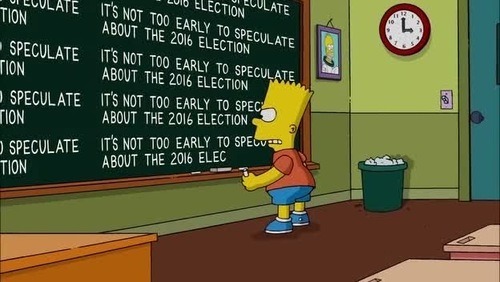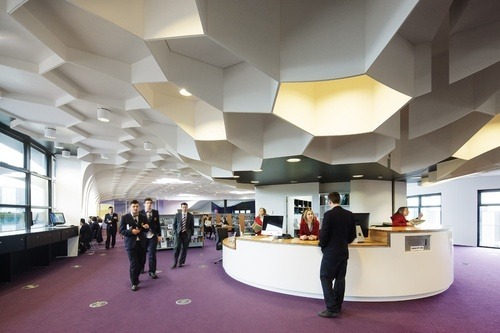Text
The Contexts and Directions of Australian Education
Education in Australia is perpetually developing and there are many factors that contribute to the development and growth of our education system which are intrinsically connected. A change in one area of educational context can have a dramatic effect on another.
This Tumblr has been created to explore and compare some of these key contextual areas that are so imperative in the progress and growth of education reform in this country.
These areas include:
Historical
Social
Political
Economic
Industrial
Global
Philosophical
Future Directions
You can read straight through, or feel free to click on any of the links above to jump straight to that section.
0 notes
Text
Historical
Schools have existed in Australia for more than 200 years. The early years of education in Australia were reserved for the wealthy families who could afford to send children to schools that were more than likely run by the local church. The children of working-class families were often sent to learn from the wives of wealthy members of the community, as they could not afford tuition fees.
0 notes
Text
Social
Cultural Changes in Education
Unlike the church-run schools of the past, which were predominantly made up of Caucasian middle to upper-class children, government schools today are diverse, multicultural and accepting of the wide range of political and religious views of their students.

Photo from St Mary’s Junior Church School archives. Teacher: Miss Metcalfe Students: First Year Junior, 1954.
Many students today possess multiple literacy’s and come from range of socio-economic and cultural backgrounds. These multiple literacy’s need to be understood and planned for by teachers when educating students, ensuring they are equipping students from different cultural backgrounds with the same opportunities for learning as any Australian-born student.

Students from Tuart Hill Primary School in Western Australia, 2011. Photo courtesy of The Sunday Times.
Currently, there are serious issues facing indigenous students, which include poverty, health problems and learning difficulties, and in 2006, the bureau of statistics released results that only 32% of indigenous Australians aged between 18-24 had completed secondary school, compared with 71% of students from a non-indigenous background.
Now more than ever, it is important for education reform in these areas to be supported and growth should be encouraged to assist this percentage to rise.
0 notes
Text
Cultural Fast Fact
In 2011, the Census revealed that 26% of Australia's population was born overseas and a further 20% had at least one overseas-born parent.
0 notes
Text
Political
Federal Government Influences on Curriculum in Victoria
In 2013, Victoria commenced the transition from the state-set curriculum, VELS (Victoria Essential Learning Standards) to the Australian curriculum, AusVELS (Australian Victoria Essential Learning Standards). This standardised curriculum will be implemented nation-wide and includes schooling levels from Foundation (formerly preparatory in Victoria) through to year 10.
Prior to VELS and AusVELS, Victoria’s curriculum was set at a state level and was called the Curriculum and Standards Framework (CSF) I and II from 1999 – 2005.
Other major controversial programs the federal government has introduced in the last 10 years include the implementation of an annual standardised test in literacy and numeracy for students in years 3, 5, 7 and 9 (NAPLAN) and the MySchools website, designed to compare statistical and the contextual information of nearly 9,500 schools around Australia.
0 notes
Audio
Audio featuring the Minister for Education, Bill Shorten and Shadow Minister for Education, Christopher Pyne as they debate their education policies on Radio Nationals Breakfast program with Fran Kelly, Friday 30 August, 2013.
0 notes
Photo

A brief summary of what I think Shorten and Pyne were saying...
0 notes
Text
Economic
Government Funding of Education
During the mid 1900’s, private schools received minimal funding from the government. As a result, the cost of running these schools was reliant on private funding from sources such as tuition fees and donations from the church and private sectors of society. Alternatively, there were no fees for sending students to governments schools.
Today, the government gives funding to both government and private schools, meaning that sending children to an independent school has become more affordable for many families in the middle and upper-classes of Australia.
Gonski Review
The Gonski Review recommends that most of its funding goes toward much needed improvements to government education. It is possible to calculate how much money the current federal government has promised to individual schools in Australia, via the Gonski For Your School search tool.
0 notes
Text
Industrial
The Evolution of Classroom Facilities
The set-up of a typical Australia classroom has changed considerably over time. Below is a picture of a classic Australian classroom in the 1930’s. This standard classroom arrangement has stayed much the same over the years, until very recently…

A teacher and students in a primary classroom at Ayr State School, 1937.
Today, the set-up of classrooms enables links to ICT (Information Communication Technologies) such as the Internet and interactive-whiteboards. Through the use of new technologies, the modern-day classroom is able to cater to students as individual learners, as well as encouraging collaborative practice through the use of learning pods, rather than the traditional lining up of desks facing the front of the room as seen above.

e-Learning classroom.
Teachers Industrial Action
After 18 months of industrial action and 3 stop work days across 2012 and 2013, the AEU (Australian Education Union) have been successful in negotiating a deal with the Napthine government that will make Victorian teachers the second highest paid in Australia.
0 notes
Text
Global
ICT
Classrooms now have ICT capabilities that mean they are able to link to other classrooms around the world.
International Baccalaureate
The IB is an internationally recognised curriculum that is offered in over 146 countries around the world
Presently, there are nearly 150 Schools offering IB in Australia (63 offer the diploma, 43 the middle Years and 87 the primary years).
0 notes
Video
youtube
PISA - Measuring student success around the world
0 notes
Text
Global
International School Ranking Systems
At present, the OECD (Organization for Economic and Cooperative Development) is the source of precise and significant information on the state of education around the world. The OECD internationally administers a standardized test every three years called PISA (Programme for International Student Assessment).
Currently, Australia is ranked 27th out of 48 countries in reading, a statistic that ACARA (Australian Curriculum and Assessment Reporting Association) wants to improve!
How Australia Ranks for Higher Education
This year, the Times Higher Education World University Rankings 2012-2013 ranked the University of Melbourne the #1 University in Australia and the #28 University in the world. Additionally, the University of Melbourne is ranked #9 in the world for graduate employability, according to the QS World University Rankings 2012-2013.
0 notes
Text
Philosophical
Changes in classroom management have seen a shift from the “one size fits all” method of teaching to more collaborative and inclusive teaching methodologies. Previously, students who did not academically excel in school were encouraged to leave and pursue trades and employment. Teaching methodologies nowadays are moving away from this pragmatic view on teaching and toward a liberal sense of teaching and learning.
Where once it was once acceptable to use corporal punishment in the classroom as a legitimate form of reprimand, it is prohibited in today’s classrooms (and rightly so). Discipline and behavioural management policies in schools today set a balanced approach, recognising student achievement whilst still dealing with poor behaviour. These policies are built on the development of student responsibilities and the encouragement of respect for both students and teachers alike.

Corporal Punishment Gif
Additionally, the provision of counselling and support opportunities for students are presently available in most schools, meaning those who would once have misbehaved because of learning and psychological concerns now have opportunities to seek added support outside of the classroom.
0 notes
Text
Philosophical Fast Fact
The national rate of Year 12 graduates for young people aged between 20–24 years has grown over the 10 years, from 78% in 2001 to 85% in 2011.
0 notes
Text
The Future of Australian Education
In the future, I believe teachers will continue to be guided by the frameworks, curriculums and qualifications set by government bodies. However, as teachers strive to further knowledge and expertise, they will no longer be the one true source of information for students, but rather facilitators of learning during this time of ICT growth in schools.
The 2013 Election will have a significant impact:

I Give a Gonski

Bart's Blackboard: The Simpsons
The Future of the Classroom
The future of the classroom in Australia is moving in the direction of modern architecture and open-plan e-learning facilities. The newly opened Infinity Centre of Penleigh Essendon Grammar School (PEGS) is at the forefront of modern learning and teaching facilities in Australia. The building, designed by MCR, boasts cutting edge architecture, which “creates complex spatial opportunities that provide a provocative learning environment for the Year 11 and 12 students”.

PEGS Science Centre

PEGS Library
0 notes
Text
References
Allen, J. (2012). Watching the Clock: Changes and Continuities. In I. Bently, EDU4CCS Changing Contexts in Education (pp. 2 – 28). Melbourne: Cengage Custom Solutions.
Ary State School. (1937). A Teacher and Students in Primary Classroom. Retrieved from <http://bishop.slq.qld.gov.au/view/action/singleViewer.do?dvs=1377916629832~14&locale=en_US&metadata_object_ratio=7&show_metadata=true&VIEWER_URL=/view/action/singleViewer.do?&DELIVERY_RULE_ID=10&frameId=1&usePid1=true&usePid2=true>.
Australian Bureau of Statistics. (2006). Indigenous Australia and Education. Retrieved from <http://www.abs.gov.au/websitedbs/cashome.nsf/4a256353001af3ed4b2562bb00121564/c733f2f1d1af9dedca25758b00117609!OpenDocument>.
Australian Bureau of Statistics. (2011). Cultural Diversity in Australia. Retrieved from <http://www.abs.gov.au/ausstats/[email protected]/Lookup/2071.0main+features902012-2013>.
Australian Bureau of Statistics. (2013). Year 12 Achievement and Continuing Education. Retrieved from <http://www.abs.gov.au/ausstats/[email protected]/Latestproducts/2071.0Main%20Features552012%E2%80%932013?opendocument&tabname=Summary&prodno=2071.0&issue=2012%962013&num=&view=>.
Australian Curriculum and Assessment Reporting Authority. (2013). Revised draft Austalian curriculum: the arts foundation to year 10, ACARA, retrieved from <http://www.acara.edu.au/verve/_resources/Draft_Arts_Curriculum_22_February_20 13.pdf>.
Australian Curriculum, Assessment and Reporting Authority. (2011). About Us. Retrieved from <http://www.acara.edu.au/about_us/about_us.html>.
I Give A Gonski. (2013). Gonski For Your School. Retrieved from <http://igiveagonski.com.au/your-school/>.
International Baccalaureate. (2013). IB Country Information for Australia. Retrieved <https://www.ibo.org/country/AU/>.
McBride Charles Ryan. (2013). McBride Charles Ryan – Infinity Centre. Retrieved from <http://www.mcbridecharlesryan.com.au>.
My School. (2013). My School Website. Retrieved from <http://www.myschool.edu.au>.
NAPLAN. (2013). National Assessment Program – Literacy and Numeracy. Retrieved from <http://www.nap.edu.au/naplan/naplan.html>.
Penleigh Essendon Grammar School. (2013). PEGS – Infinity Centre. Retrieved from <http://www.mcbridecharlesryan.com.au/#/projects/pegs-senior/>.
QS Top Universities. (2013). QS World University Rankings 2012 – 2013. Retrieved from <http://www.topuniversities.com/university-rankings>.
Radio National. (2013). Breakfast with Fran Kelly. Retrieved from <http://www.abc.net.au/radionational/programs/breakfast/education-debate/4924086>.
Scott, S. (2001). A task-centered approach to performance based assessment. General Music Today, 14(3), 10-14.
St Mary’s Junior Church School. (2013). Miss Metcalfe Students: First Year Junior, 1954. Retrieved from <http://www.burtonlatimer.info/education/ChurchJuniorSchoolPhotos/StMarysJunior-1954Metcalfe.html>.
The Worlds Top University Rankings. (2013). Times Higher Education World University Rankings 2012 – 2013. Retrieved from <http://www.timeshighereducation.co.uk/world-university-rankings/2012-13/world-ranking>.
Tuart Primary School. (2013). Multicultural Classroom. Retrieved from <http://det.wa.edu.au/edenews/detcms/corporate-communications-marketing/ed-e-news/news-items/october-2011/was-multicultural-schools.en?oid=NewsItem-id-12045635>.
Wikimedia. (2013). E-Learning Environment. Retrieved from <http://commons.wikimedia.org/wiki/File%3AElearnroom.jpg>.
World Vision Australia. (2007). Australian Indigenous Poverty. Retrieved from <http://www.worldvision.com.au/issues/Indigenous_Australia.aspx>.
YouTube. (2013). PISA: Measuring student success around the world. Retrieved from <http://www.youtube.com/watch?v=q1I9tuScLUA>.
0 notes